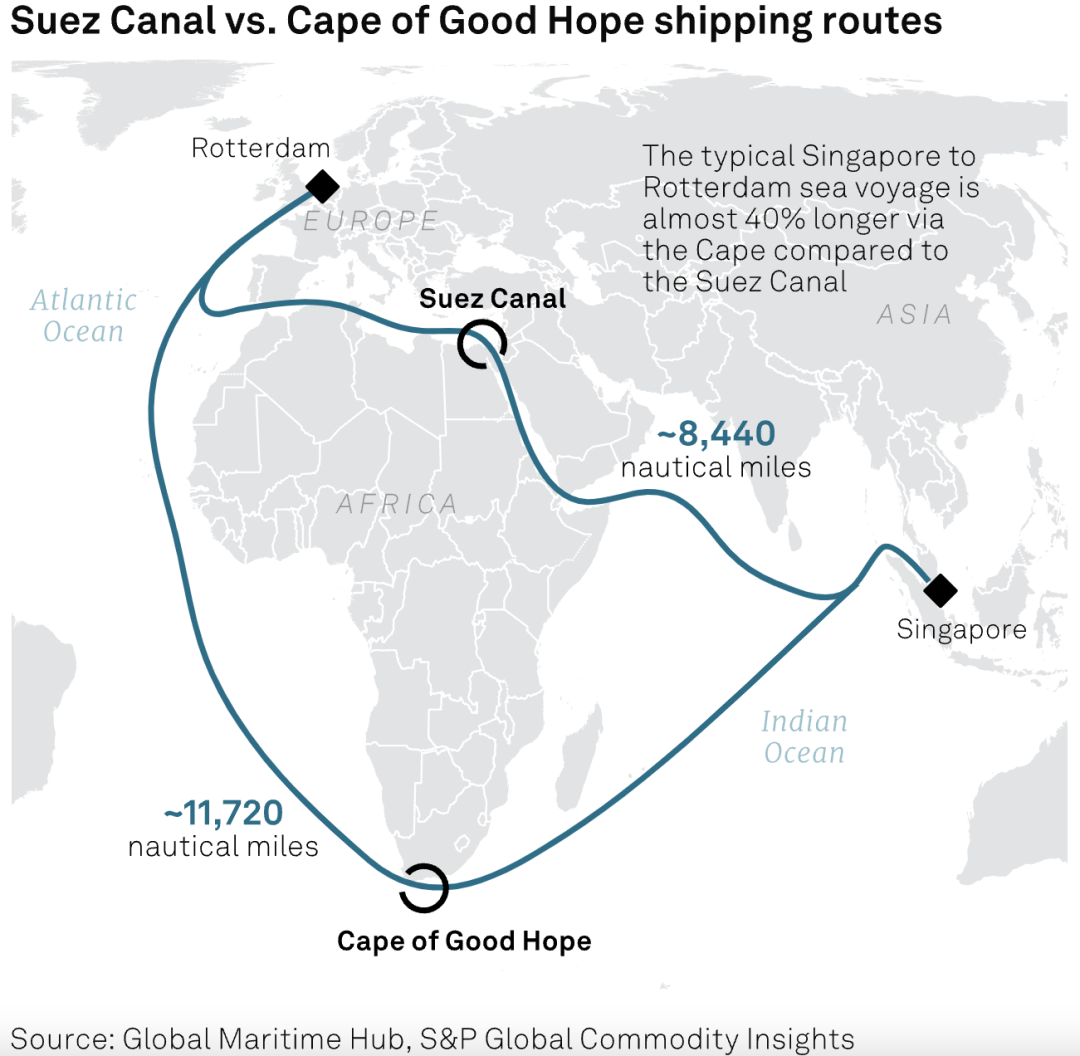Global seaborne trade in tonne-nautical miles is set to increase at the highest rate since 2010 due to increased distances travelled by merchant ships as a result of the Red Sea crisis.
Global seaborne trade, measured in tonne-nautical miles, is set to post its second largest annual increase on record due to geopolitical influences in the Middle East and Europe, according to Clarksons, the world's largest shipbroker.

Specifically, the metric, which is measured as cargo multiplied by distance travelled, will increase by 5.1 per cent year-on-year from 2023 to 3.2 trillion tonne-nautical miles.
Trevor Crowe, an analyst at Clarksons, pointed to geopolitically-induced increases in vessel voyages as a significant factor in the tonne-nautical mile surge, with another partly attributable to the good start in trade volumes.
Ships have had to round the Cape of Good Hope to avoid the Red Sea and Gulf of Aden due to attacks in the Red Sea region. The crisis is intensifying after the Houthis managed to sink a vessel using a maritime drone ship in recent weeks.
Data shows that the Red Sea crisis has had a particularly significant impact on container shipping, with some 690 vessels currently detouring around the Cape of Good Hope.
The most intuitive impact of ships diverting to the Cape of Good Hope is the lengthening of travelling distances. Platts data show that the port of Rotterdam to the port of Singapore, for example, the regular voyage of about 8440 nautical miles, bypassing the Cape of Good Hope is about 11,720 nautical miles, the voyage increased by about 40%, is expected to increase the average voyage of global maritime trade this year will increase by 2.8 per cent, while last year, this increase was only 1.8 per cent.

This diversions is not good news for global efforts to reduce carbon emissions. Rising fuel costs and increased carbon emissions are both direct consequences of bypassing.
https://www.cnss.com.cn/html/sdbd/20240703/353973.html
|